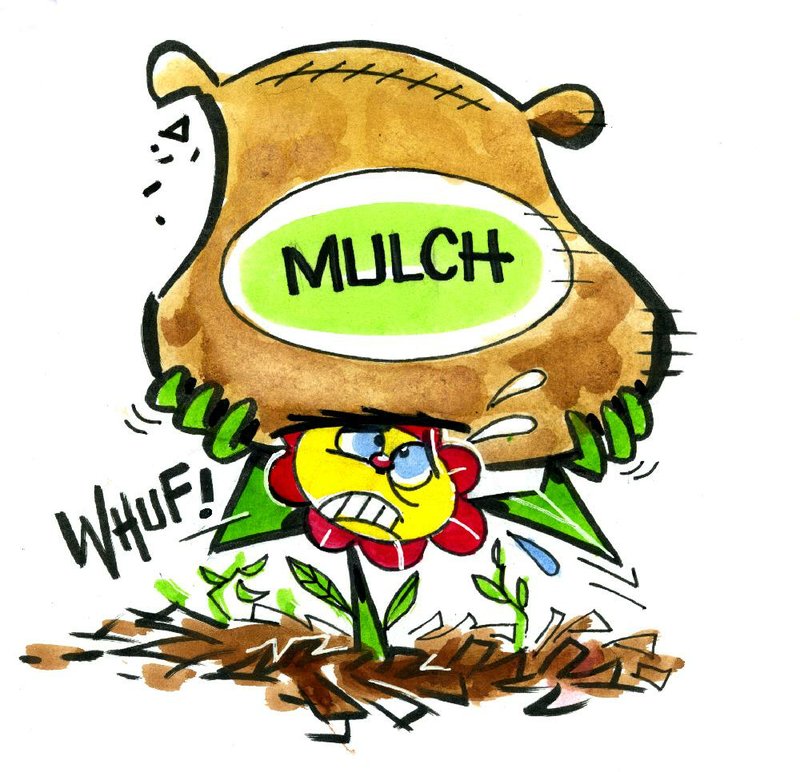Q I would like your advice on plant choices for two spots in my yard. The first one, on the northwest corner of our lot, is in full sun and so quite hot in summer, although it does get a little shade in late afternoon from a maple tree nearby. I put in some Pfitzer junipers there to add more evergreen to the yard. I want to add some evergreen azaleas (at least, that's what I'm thinking). Looking online, it seems many of them are not that crazy about full sun. And then they also have to be fairly cold hardy to be in Fayetteville. Do you have any varieties you might suggest? Some get very large, but hopefully I could trim them to keep them medium in size (5 feet by 5 feet or so) if they decide to really grow. Or maybe there is a smallish variety that would work there. I guess pink or some pretty lavender color would be nice. The second spot is on the other end of the same part of our yard, on the southwest corner. On that corner, we have a rather large smoke tree. It has always been such an odd tree, kind of a problem for us. The branches quickly grow very long, then invariably crack in the wind and hang down. We don't know whether to cut it to the base or not, so you see the trunks sticking up. But we cut off the branch stems because they are constantly breaking. We are about ready to just pull that tree out and put in a Japanese maple. I would like a weeping type, I think, maybe one that just gets about 10 feet by 10 feet. It seems, again, that not many Japanese maples like a spot like that, which is in full sun (and I mean full!), with that extreme heat. Do you have a suggestion on any Japanese maples that would be happy there?
A Not only are these beds in full sun but totally exposed at the edges of your yard, so I don't think azaleas or Japanese maples are good options. Sun- and heat-loving shrubs include dwarf variegated abelia -- it should bloom a good part of the summer, and there are many options to choose from. If you don't care if they are evergreen, dwarf buddleia (butterfly bushes), itea, ninebark, "Little Lime" hydrangea or dwarf spirea would be good choices. For a small deciduous weeping tree, consider a weeping redbud. Two other small flowering trees are the fringetree (Chionanthus virginicus) and a serviceberry (Amelanchier).
Q Last fall when the blooming was over, I cleaned out the flower beds, pulled any grass or weeds and then tilled and spread cedar mulch. Some of these beds will have bedding plants, so the mulch is not a question, but I'm not sure what to do with the beds. I want to plant seeds. Do I rake the mulch up, then plant seeds and spread the mulch back or leave it off?
A It depends on how thick your mulch is and what seeds you are trying to grow. Some seeds need light to germinate. I would suggest pulling back the mulch in the area where you are seeding, plant the seeds, and once the seedlings are up and growing, put the mulch back around the plants.
Q I live in Izard County and have a shady garden spot that has never produced more than leggy mums (my poor pruning) and a huge rosemary plant. I took everything out down to the bare dirt and want to plant spare shade-loving plants (the deer eat my hostage) interspersed with rock formations. Will succulents work in a shady area? I prefer perennials.
A I am surprised mums and rosemary are growing here as they are sun plants, not shade ones -- maybe that is why your mum is leggy. There are some great perennials for shade and some succulents that like it, too. The key is to group plants together that need similar conditions. There are a number of sedums that will do well in rocky, dry soils, even in the shade. I know Izard County is famous for rocky soils. If you can amend the soil some, try jack-in-the-pulpit, hellebores, ferns, bleeding heart, trilliums, mertensia, heuchera and Solomon's seal. There are many great shade-loving perennials that are not so attractive to deer. I think your spelling of "hosta" as "hostage" may be a Freudian slip as they are definitely deer hostages.
Q My wife and I enjoy your column. Recently I was rereading one of your articles in the Northwest Arkansas Democrat-Gazette about treating crape myrtle trees infested with the invasive bark scale insect. You advised pruning heavily infested branches and said that burning would be the preferred disposition, but that you cannot burn refuse in city limits. That is certainly not true in Fayetteville, unless it's so dry that a burn ban is in effect. I just call the fire department and give them my address. They used to issue permits, but no longer do that, just give permission. Perhaps your statement is true in Little Rock, but I'll bet the local authorities would have no problem with a small fire to get rid of infested yard waste if the circumstances were explained. The double bagging you recommended is cumbersome and not effective if the branches poke holes in the bags.
A A good point -- double bagging a lot of refuse is not easy. I think your recommendation to check with your local fire department is a great idea. The key is to ask permission, not forgiveness.
Janet B. Carson is a horticulture specialist for the University of Arkansas Cooperative Extension Service. Write to her at 2301 S. University Ave., Little Rock, Ark. 72204 or email her at
jcarson@arkansasonline.com
HomeStyle on 03/11/2017
